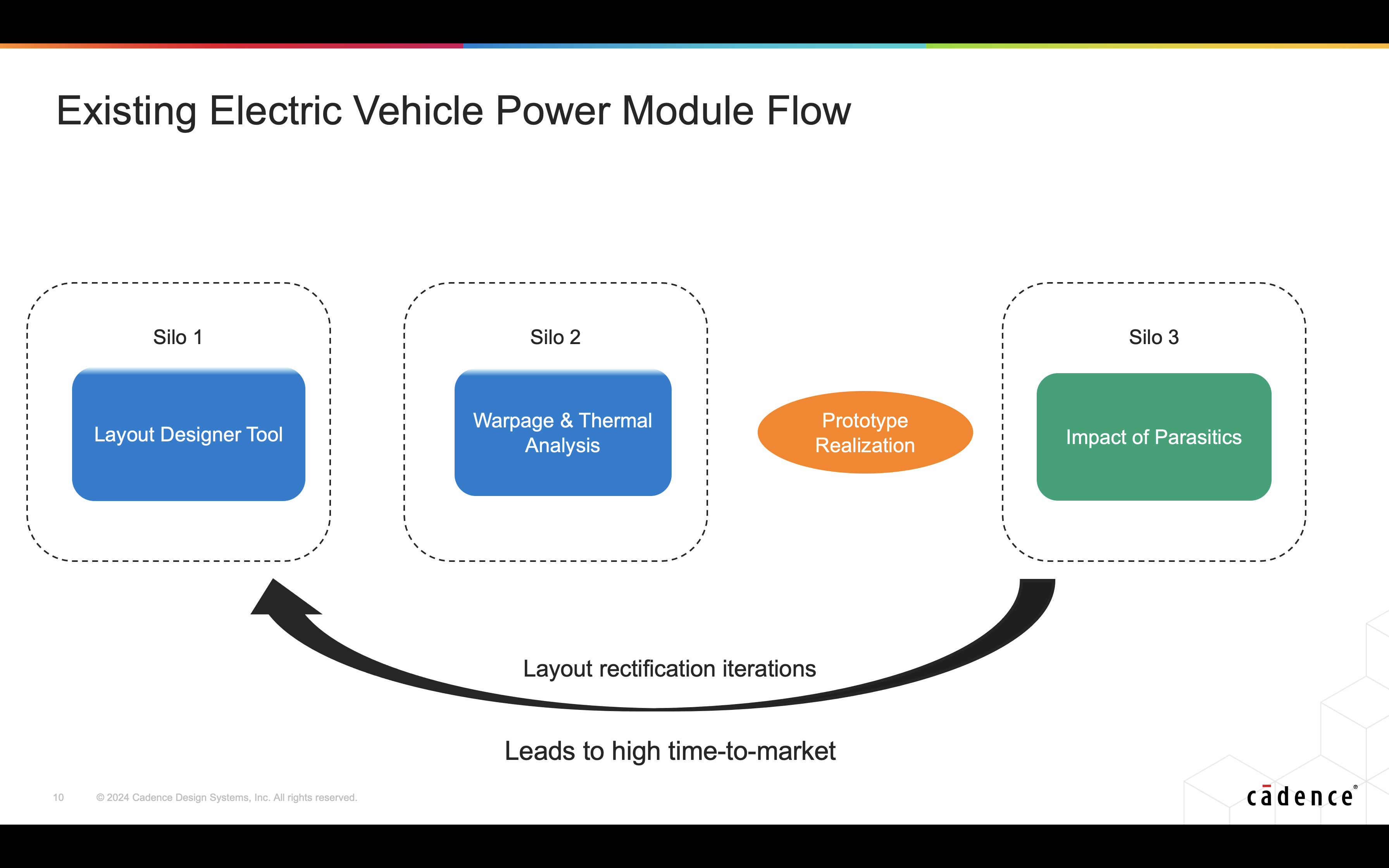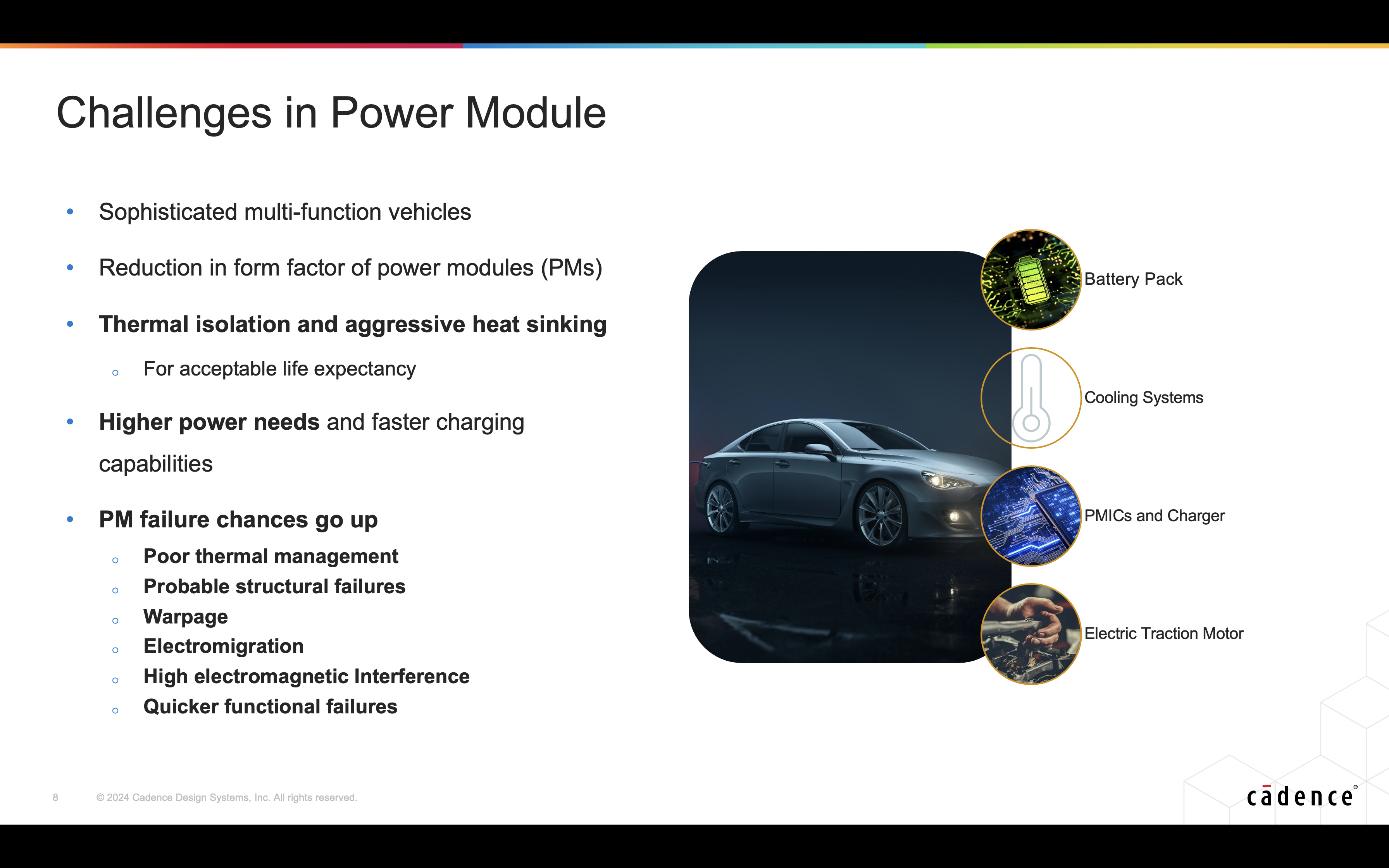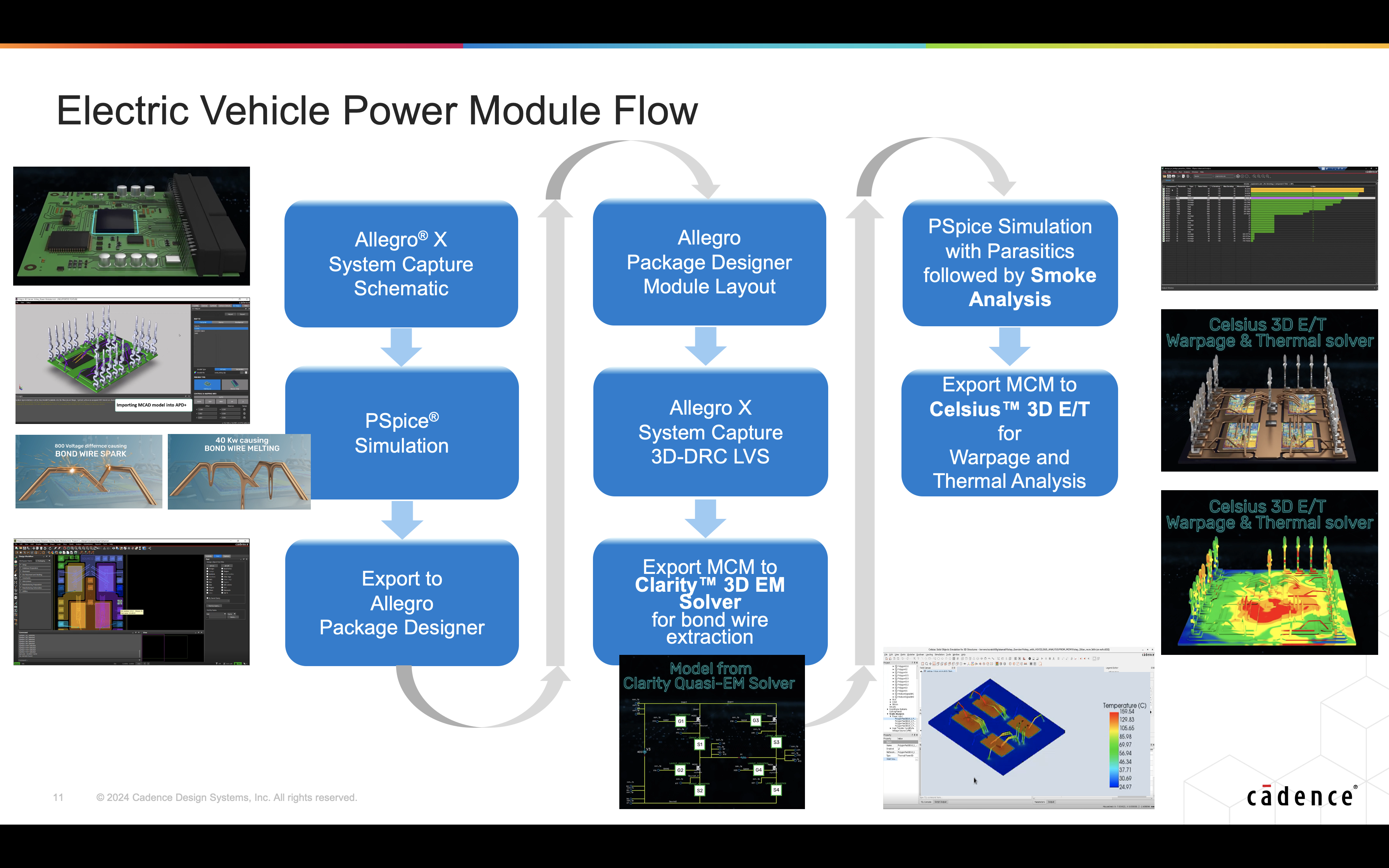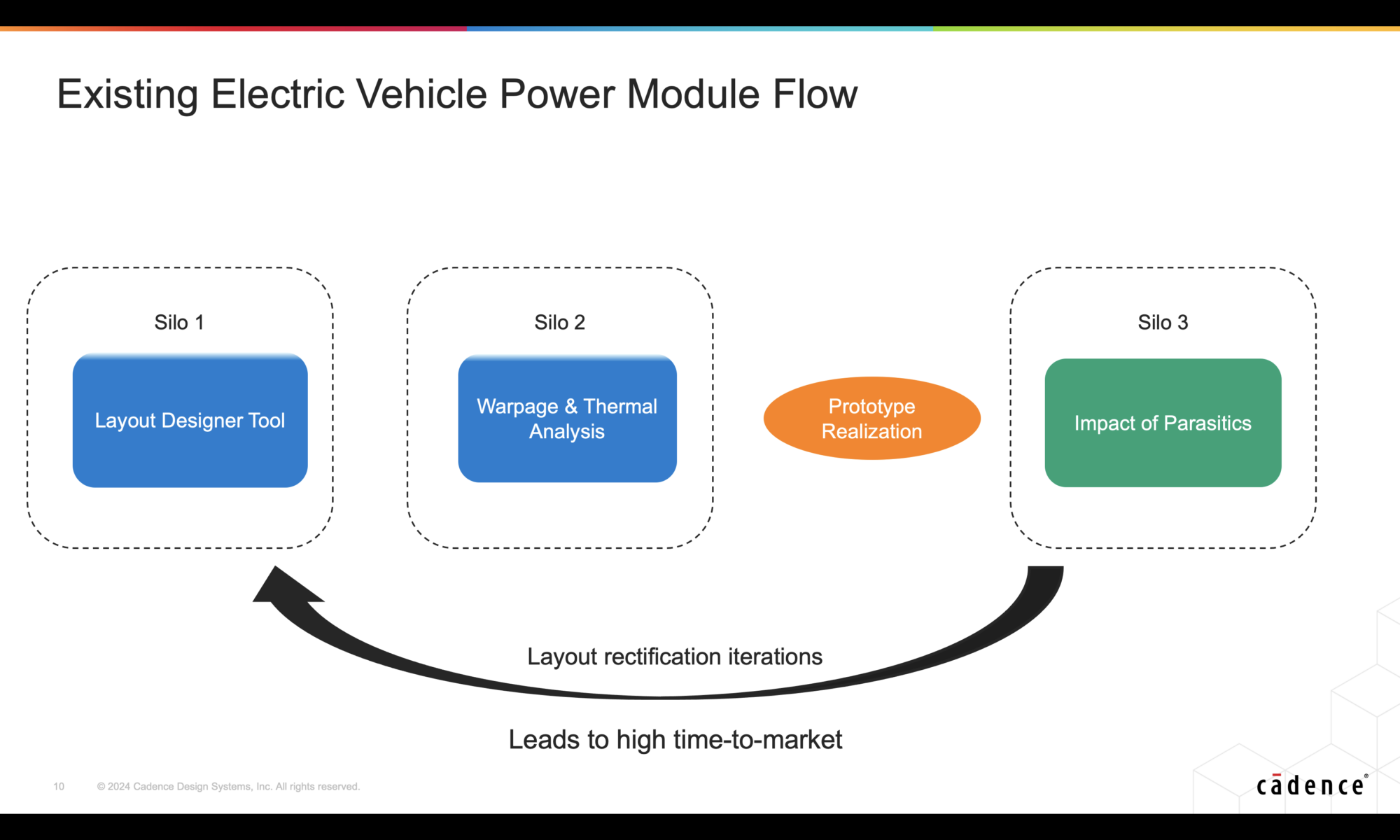The development of electric vehicles (EVs) is key to transitioning to sustainable transportation. However, designing high-performance EVs presents significant challenges, particularly in power module design. Power modules, including inverters, bulky DC capacitors, power management ICs (PMICs), and battery packs, are critical in managing the high voltage and current systems in EVs. These modules often operate at over 1,000V and can supply hundreds of amperes, generating substantial heat, with temperatures potentially rising to 200-250°C. As power distribution systems shrink, effective thermal management becomes essential. Power modules also must meet strict safety standards, making a system-level approach for integrating ICs, packages, and PCBs, crucial for avoiding safety risks and delays.
Cadence recently sponsored a webinar on the topic of integrated design flow for power modules for electric vehicles. The webinar was hosted by Amlendu Shekhar Choubey, Director Product Management, Athar Kamal, a Lead Product Engineer and Ritabrata Bhattacharya, a Senior Principal Product Engineer, both from Cadence.
Current Challenges in Power Module Design
The design process for power modules is often fragmented, with insufficient integration between electrical, mechanical, and thermal design. This leads to miscommunication, delays, and increased costs. Simulation tools are limited, especially for electromagnetic (EM) analyses, requiring specialized expertise. Many designers resort to lab testing, which can be too late to address critical issues impacting safety, performance, and reliability.

Thermal management and parasitic effects are significant challenges in power module design. High power requirements generate heat that must be managed to avoid component failure. Parasitic inductances from bondwires, copper traces, and other components can lead to overshoot during switching, causing performance degradation and electromagnetic interference (EMI). Addressing these issues early in the design cycle is crucial to avoid critical system failures later in the process.

The Ideal Power Module Design Flow
An ideal power module design flow integrates electrical, mechanical, and thermal considerations from the start. Schematic-driven layouts with SPICE-enabled simulations ensure functionality is validated before layout. Quick extraction of parasitics using the 3D-Quasi-Static solver and integration back into simulations is essential to understand their impact. Auto-generating post-layout schematics aligns the design with the original schematic, reducing errors. Thermal analysis tools, such as Celsius Thermal Solver, help optimize cooling solutions early on. 3D EM tools like Clarity 3D Solver help with management of electromagnetic effects.
Cadence’s Advanced Tools for Optimization
Cadence’s advanced solutions, including Allegro X, PSpice, Clarity 3D Solver, and Celsius Thermal Solver, offer an integrated and thermally aware design flow that ensures both functional safety and reliability. Allegro X enables PCB layout, with advanced capabilities for component placement, routing, and thermal management, integrated with other Cadence tools. PSpice allows for electrical simulations and parasitic effect analysis, ensuring the design meets functional and safety requirements.
Clarity 3D Solver provides EM simulation, optimizing the power module’s electromagnetic characteristics and reducing overshoot to improve reliability. Celsius Thermal Solver predicts temperature distribution, identifies hot spots, and optimizes cooling solutions to mitigate thermal issues early. Together, these tools create an integrated design process, reducing thermal runaway risk and addressing EMI and parasitic effects before they affect the final product.
Seamless Integration of Cadence’s Tools
Cadence’s platform supports collaboration across engineering disciplines. Designers do not need to be experts in every area but must understand how their expertise fits within the larger ecosystem. They can execute the complete design flow without leaving their preferred environment to complete all the analyses needed for a reliable design. This approach improves decision-making and ensures optimized designs. Thermal and warpage analysis can be triggered from within the layout tool, streamlining workflows and reducing errors.

The Future of Power Module Design and Reliability
Looking ahead, the next challenge for EV power module design will be estimating Mean Time Between Failures (MTBF) based on data generated during the design process. Predictive analytics will be key for assessing reliability and preventing failures, ensuring the durability of EV systems.
Summary
An integrated approach to power module design is essential for addressing the complex challenges in EV development. Advanced tools that combine electrical, thermal, mechanical, and EM simulations within a unified platform help streamline the design process, reduce costs, and accelerate time-to-market. Cadence’s design flow bridges traditional gaps, enabling the creation of safer, more efficient, and reliable power modules for the next generation of EVs. With tools like Allegro X, PSpice, Clarity 3D Solver, and Celsius Thermal Solver, the EV industry can benefit from a thermally aware, end-to-end integrated design solution that enhances functional safety and reliability.
For more details, refer to the following:
Cadence whitepaper titled “Power Module Design for Electric Vehicles – Addressing Reliability and Safety.”
Cadence Automotive Solutions page.
Also Read:
Compiler Tuning for Simulator Speedup. Innovation in Verification
Cadence Paints a Broad Canvas in Automotive
Share this post via:





Comments
There are no comments yet.
You must register or log in to view/post comments.